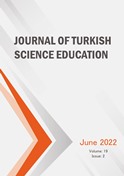Enhanced Learning through Analogy in the Teaching of Cardiovascular System
Keywords:
Analogy, biology, conceptual understanding, constructive learning, critical thinkingAbstract
This study examined the use of analogies incorporated in biology teaching for the topic "transport in humans‟. An action research approach was utilized, comprising both quantitative and qualitative analyses, in a 10th grade secondary school classroom setting. Parameters such as mean, standard deviation and the covariance analysis from both pre and post tests disseminated revealed that using analogy, as a method of teaching was statistically significant in improving the students‟ conceptual understandings and their critical thinking in constructing knowledge from their environment. The quantitative findings were qualitatively supported with the students‟ worksheets and outcomes from the interviews. The ability of the students to think critically was observed in the intervention. With the guidance from the teacher, students can reflect upon scientific concept that they learned by successfully bridging between the target and the analogue.
